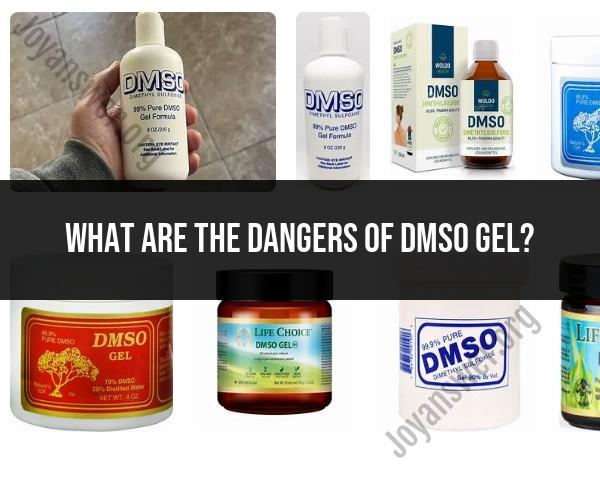What are the dangers of DMSO gel?
Dimethyl sulfoxide (DMSO) gel is a solvent that has been used in various medical applications, including as a topical analgesic. However, its use comes with several potential risks and dangers:
Skin Irritation and Sensitivity: DMSO can cause skin irritation, itching, redness, and a burning sensation. In some cases, it may lead to dermatitis or other allergic reactions.
Systemic Effects: DMSO is readily absorbed through the skin and can carry other chemicals with it. This can lead to systemic effects, including headaches, dizziness, and nausea. There is also a risk of introducing harmful substances into the bloodstream if the skin is exposed to contaminants while using DMSO.
Odor and Taste: DMSO has a strong garlic-like odor and can cause a garlic-like taste in the mouth, which some users find unpleasant.
Eye and Vision Issues: If DMSO comes into contact with the eyes, it can cause irritation and damage. Users should take care to avoid contact with the eyes.
Reproductive and Developmental Risks: Some studies suggest that DMSO may have reproductive and developmental toxicity, although more research is needed to fully understand these risks.
Interaction with Other Medications: DMSO can interact with other medications and enhance their absorption, potentially leading to increased effects or toxicity.
Potential for Contamination: Because DMSO can carry other substances through the skin, there is a risk of contamination if the gel is not pure or if the skin is not clean.
Long-Term Effects: The long-term effects of DMSO use are not well understood, and prolonged use could potentially lead to unknown health risks.
It is important for users to consult with a healthcare professional before using DMSO gel and to use it as directed to minimize potential risks.
What potential risks or hazards are associated with the use of DMSO gel?
Here are some potential risks or hazards associated with the use of DMSO gel:
- Skin irritation: This is the most common side effect of DMSO gel. It can cause itching, burning, redness, and dryness of the skin.
- Garlic-like body odor: DMSO can be absorbed through the skin and into the bloodstream. Once in the bloodstream, it can be broken down into compounds that give the body a garlic-like odor. This odor can be noticeable on the breath and skin.
- Nausea and vomiting: DMSO can irritate the stomach and intestines, which can lead to nausea and vomiting.
- Drowsiness and dizziness: DMSO can cause drowsiness and dizziness, especially in high doses.
- Increased absorption of other substances: DMSO can increase the absorption of other substances applied to the skin, including medications. This can be dangerous, as it can lead to overdose.
It is important to note that DMSO is not approved by the U.S. Food and Drug Administration (FDA) for any medical use. There is limited scientific evidence to support its use for any condition.
If you are considering using DMSO gel, it is important to talk to your doctor first. They can help you weigh the risks and benefits of using this product.













